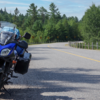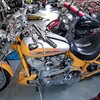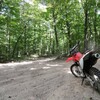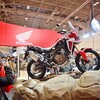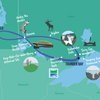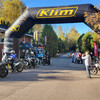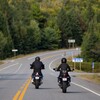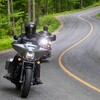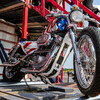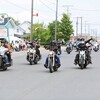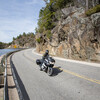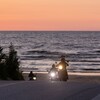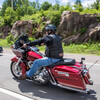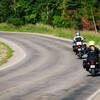
Trading Up
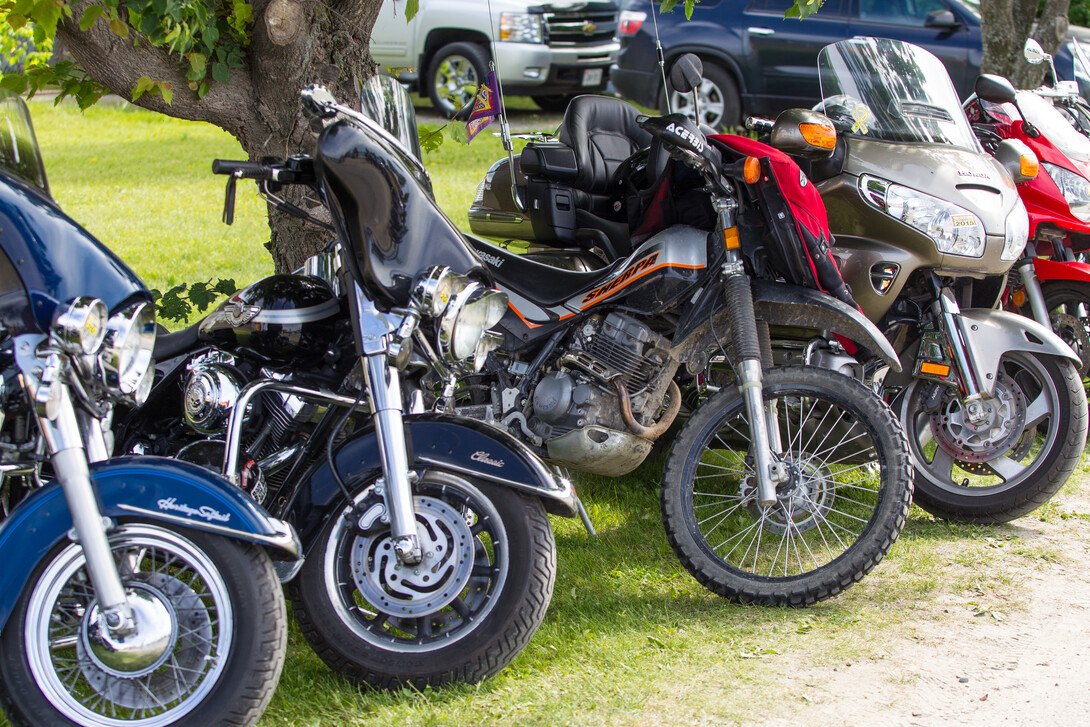
Picking The Right Bike For You
When choosing a touring bike, there are plenty of great options from all the manufacturers. From the venerable Harley-Davidson, to the ubiquitous Honda Goldwing, there is a model for everyone. Most dealers will be more than happy to indulge your desire to test them out before committing. Displacement size is also not as critical as you'd think. Bigger engines don't increase the 'danger' factor, they can help you accelerate quickly out of dangerous situations. However, engines above 750 cc may increase your insurance rates.
Gear, Accessories and Aftermarket Parts
No matter what, you will need bags with your bike. You may want the option of removing the bags if you plan on only doing short cruising. Windshields are not an option - while larger bikes handle better in the wind, the constant buffeting of your body will tire you out too quickly. Find the right riding position, and don't be afraid to change the handlebars and brake or clutch position if they don't suit you. And last, but most importantly, buy quality tires. The 'best' tire for the bike will depend of what make and model you choose.
Handling and Weight
The two biggest differences between smaller displacement bikes and bigger touring bikes are the total weight, including cargo and passengers, and the handling, especially at slow speeds. The turning radius is wider than on smaller bikes. Touring bikes are designed to perform well at high speeds, and carry a larger load. These bikes can weigh 600 lbs plus, before riders, passenger and cargo is put on them. Be sure you understand the suspension of the motorcycle and how to adjust it before riding out.
Often touring entails riding two up (with a passenger) which offers it's own challenges. It's a good idea to get used to riding with a passenger, and making sure they know how to react, both in regular driving, and in emergency situations. The general rule of thumb is that when you lean, they lean with you. Also, having a system of communication set up for when your passenger needs a bathroom break isn't a bad idea either. Motorcycle.com's article on this is comprehensive.
Everyone drops their bike at some point, even the most experienced rider. Knowing how to get the bike upright again, before this happens, is key. Check out this video that shows that you don't have to be a muscle-man to get your bike upright again.
Advanced Motorcycle Training
Completing a professional course to obtain your motorcycle license is always a good idea, and having a summer or two worth of riding on back roads and in lower speed limit areas is a perfect way to prepare yourself for the move onto the highways. However, there are also advanced courses for those who have been riding for years and want to upgrade their skills. When you're all set-up and ready to go, try one of the many routes in Ontario.
Recommended Articles

Bucket List Motorcycling in Ontario, Canada 2026

Ontario's Best Twisties: Five Roads to Get Your Lean On

The Big Belly Tour—A Complete List of Ontario's BBQ Joints

It's Bike Night in Ontario 2024

Ontario's Top Twisties
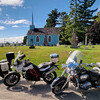
Have You Ridden Canada's OG Highway? Here's Why Every Rider Needs to Hit Up Historic Highway 2
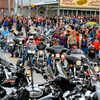
23 Amazing Photos That Prove PD13 Is Still The Best Motorcycle Event Ever

Motorcycle Swap Meets in Ontario—The Complete List for 2025

And a Vespa shall lead them all...
